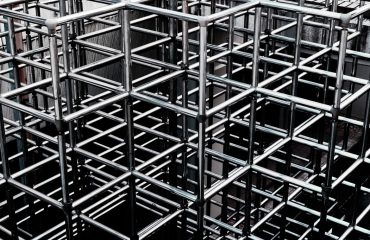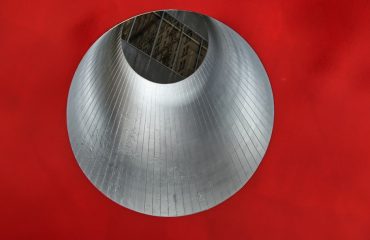body {
font-family: sans-serif;
line-height: 1.6;
}
h1, h2, h3 {
color: #333;
}
h1 {
font-size: 2.5em;
}
h2 {
font-size: 2em;
}
h3 {
font-size: 1.5em;
}
The construction industry is undergoing a significant transformation, driven by the need for sustainable practices, faster project completion, and enhanced building performance. Hybrid construction, a revolutionary approach combining traditional building methods with modern technologies and materials, is leading this charge. This innovative approach offers a compelling blend of established techniques and cutting-edge advancements, resulting in projects that are both efficient and environmentally conscious.
Understanding the Core Principles of Hybrid Construction
Hybrid construction isn’t simply about mixing materials; it’s a strategic approach that leverages the strengths of different construction methods to optimize the entire building process. For instance, a project might utilize the speed and precision of prefabrication for certain components (like modular walls or bathroom pods) while employing traditional techniques for on-site work that requires more flexibility, such as intricate detailing or site-specific adaptations. The key is intelligent integration, maximizing the benefits of each method while minimizing their respective drawbacks.
Common Hybrid Construction Methods and Material Combinations
The possibilities within hybrid construction are vast. Some common combinations include:
- Steel and Timber: Combining the strength and durability of steel with the sustainable and aesthetically pleasing qualities of timber creates robust and environmentally friendly structures. Steel frames can provide the structural backbone, while timber is used for cladding, flooring, or internal partitions.
- Concrete and Mass Timber: This combination leverages the fire resistance and strength of concrete with the sustainable and rapidly renewable resource of mass timber. Concrete might form the foundation and core structural elements, while mass timber creates floors, walls, and ceilings.
- Prefabricated Modules and In-Situ Construction: This approach uses prefabricated modules (entire rooms or sections of a building) constructed off-site and then assembled on-site, combined with traditional in-situ construction for elements that require on-site adaptation.
- 3D-Printed Concrete and Traditional Masonry: 3D-printed concrete can be used for complex shapes and rapid construction of certain elements, while traditional masonry techniques handle intricate details or areas requiring specific craftsmanship.
- Bamboo and Steel: Bamboo, a rapidly renewable resource, is increasingly used in conjunction with steel for structural support, creating sustainable and aesthetically unique structures, particularly in regions with abundant bamboo resources.
Benefits of Embracing Hybrid Construction Techniques
The advantages of hybrid construction are numerous:
- Increased Speed and Efficiency: Prefabrication and other modern techniques significantly reduce construction time compared to fully traditional methods.
- Improved Sustainability: The use of sustainable materials like timber and the reduction of waste through prefabrication contribute to a lower environmental impact.
- Enhanced Cost-Effectiveness: While initial investment might seem higher in some cases, the overall project cost can be reduced due to faster construction, reduced labor costs, and less material waste.
- Greater Design Flexibility: Hybrid approaches allow for more creative and innovative designs by combining the strengths of different materials and methods.
- Improved Building Performance: Strategic material combinations can enhance the building’s thermal performance, acoustic properties, and overall durability.
Challenges and Considerations in Hybrid Construction Projects
Despite the numerous benefits, hybrid construction presents some challenges:
- Coordination and Integration: Successfully integrating different construction methods and materials requires meticulous planning and coordination between different teams and trades.
- Specialized Skills and Expertise: Workers need to be proficient in various construction techniques and familiar with the specific properties of different materials.
- Potential for Material Compatibility Issues: Careful consideration must be given to ensure compatibility between different materials to avoid structural or performance problems.
- Higher Initial Investment: The initial investment in specialized equipment, software, and training can be higher compared to traditional methods.
- Regulatory Compliance: Meeting building codes and regulations for hybrid structures might require additional approvals and inspections.
The Future of Hybrid Construction: Trends and Innovations
Hybrid construction is constantly evolving. Future trends include:
- Increased use of advanced digital technologies: BIM (Building Information Modeling), 3D printing, and robotics will play an increasingly important role in optimizing design, fabrication, and construction.
- Greater emphasis on sustainable and recycled materials: The industry will continue to explore and adopt more eco-friendly materials and construction processes.
- Development of new hybrid material combinations: Research and development will lead to innovative material combinations with improved performance and sustainability characteristics.
- Increased adoption of modular and prefabricated construction: Off-site construction will become even more prevalent, further accelerating project timelines and improving efficiency.
- Greater focus on lifecycle assessment: The entire lifecycle of a building, from design to demolition, will be considered to minimize its environmental impact.
In conclusion, hybrid construction represents a significant advancement in the building industry. By intelligently combining traditional and modern techniques, it offers a path towards more sustainable, efficient, and innovative building projects. While challenges remain, the benefits and future potential of hybrid construction are undeniable, making it a crucial approach for shaping the future of the built environment.
Tags: Hybrid Construction, Sustainable Construction, Prefabricated Construction, Modular Construction, Green Building




